#giovanni di lorenzo de medici
Text
BROTHERS IN MEDICI DESERVE BETTER



#you cant tell me they didnt love one another#fight me history#giovanni di lorenzo de medici#piero di lorenzo de medici#lorenzo#lorenzo the magnificent#lorenzo the elder#cosimo#francesco pazzi#guglielmo de pazzi#giuliano de medici#i medici
63 notes
·
View notes
Text
THIS DAY IN GAY HISTORY
based on: The White Crane Institute's 'Gay Wisdom', Gay Birthdays, Gay For Today, Famous GLBT, glbt-Gay Encylopedia, Today in Gay History, Wikipedia, and more … December 11

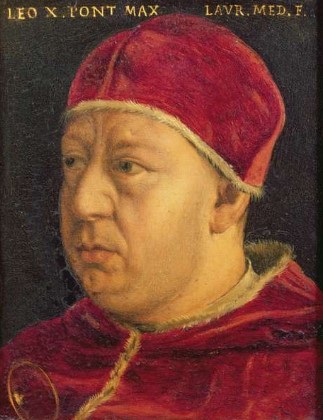
1475 – Pope Leo X (d.1521), born Giovanni di Lorenzo de' Medici, was the Pope from 1513 to his death in 1521. He was the last non-priest (only a deacon) to be elected Pope. He is known for granting indulgences for those who donated to reconstruct St. Peter's Basilica and his challenging of Martin Luther's 95 Theses. He was the second son of Lorenzo de' Medici, the most famous ruler of the Florentine Republic, and Clarice Orsini. His cousin, Giulio di Giuliano de' Medici, would later succeed him as Pope Clement VII (1523-34).
Several modern historians have concluded that Leo was homosexual. Contemporary tracts and accounts such as that of Francesco Guicciardini have been found to allude to active same-sex relations - alleging Count Ludovico Rangone and Galeotto Malatesta were among his lovers.
Cesare Falconi has examined in particular Leo's infatuation with the Venetian noble Marcantonio Flaminio, with Leo arranging the best education that could be offered for the time. Von Pastor has argued, however, against the credibility of these testimonies, and rejected accusations of immorality as anti-papal polemic. Gucciardini was not resident at the papal court during Leo's pontificate, while other contemporaries such as Matteo Herculano took pains to praise his chastity. Paul Strathern, a British writer and academic, argues that Leo, while homosexual, was not sexually active as pope, despite identifying notable members of that family as such.


Jean Cocteau and Jean Marais
1913 – Jean Marais, French actor (d.1998); Marais was never much of an actor, and it is doubtful he would have achieved international fame had he not become Jean Cocteau's lover, but he was, by universal acclaim, one of the most handsome men ever to appear in films. In the 1940s when he made most of his movies for Cocteau, actors were still slicking down their hair with Kreml and Vitalis. But he changed all that. His cheveaux fous and athletic good looks created a new style of postwar leading man.

When in 1946 he spent his time in Cocteau's Beauty and the Beast, trapped within an ape-like constume, waiting for Beauty's kiss to turn him once again into Jean Marais, Gay moviegoers around the world secretly wished that they were Josette Day who actually got to kiss the handsome actor's furry face. What is perhaps most interesting about the friendship between Cocteau and Marais is that the actor's face in profile bore an astonishing resemblance to the boys Cocteau had been sketching for thirty years before meeting him.
In the 1960s, he played the famed villain of the Fantômas trilogy. After 1970, Marais's on-screen performances became few and far between, as he preferred concentrating on his stage work. He kept performing on stage until his eighties, also working as a sculptor. In 1985, he was the head of the jury at the 35th Berlin International Film Festival.


1948 – Alvin Baltrop (d.2004) was a gay African-American photographer who earned fame through his photographs of the Hudson River piers during the 1970s and 1980s.
Baltrop was born in 1948 in the Bronx. He discovered his love of photography in junior high school. Baltrop received no formal art education; older photographers from the neighborhood taught him different techniques and how to develop photos himself.
Baltrop enlisted in the Navy as a medic during the Vietnam War and continued taking photos, mainly of his friends in sexually provocative poses. He built his own developing lab in the sick bay, using medic trays for developing trays. After his time in the Navy, Baltrop worked odd jobs as a street vendor, a jewelry designer, a printer, and a cab driver. Because he wanted to spend more time taking photos at the Hudson River piers, he quit his job as a cab driver to become a self-employed mover. He would park his van at the piers for days at a time, living out of his van to take pictures.
From 1975 through 1986, Baltrop took photographs of the West Side piers, where he was a well-known member of the community. Baltrop knew every person he photographed, and people often volunteered to be photographed. Younger boys and men at the piers often confided in him about their sexual orientation, their relationships with their families, their housing status, and their work.
Baltrop captured the gay cruising spots and hookup culture that existed in New York City before the AIDS epidemic. Baltrop's photographs not only captured human personalities, but also the aesthetics of the dilapidated piers. His life work is a snapshot of gay, African-American, and New York City history.
Baltrop struggled to make his way in the art world, facing racism from the white gay art world. Gay curators often rejected his work, accused him of stealing it, or stole his work themselves.

"Three Sailors"
Late during the 1990s, NYC artist John Drury, who knew Alvin from their shared neighborhood - Drury living on Third Street, with his wife and Baltrop on Second Street, in lower Manhattan - befriended the artist and recognized the photographers unique abilities, nominating him for a Louis Comfort Tiffany Foundation Award for the Arts. Alvin Baltrop had few exhibits in his lifetime; his work gaining international fame only after his death.
According to one journalist, Baltrop came out as gay at fourteen years old. Baltrop had long term relationships with men and women, but preferred identifying as gay.
Baltrop was diagnosed with cancer in the 1990s. Impoverished and without health insurance, curators and filmmakers attempted to exploit him for their own financial gain. He died on February 1, 2004

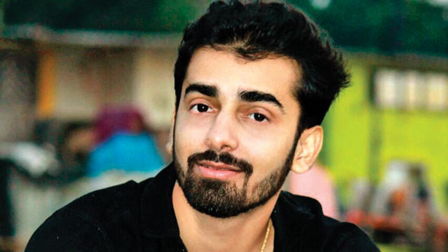
1990 – Nakshatra Bagwe, born in Mumbai, India, is an Indian actor and award winning film maker. Nakshatra will be making his Indian feature film debut in My Son is Gay and is due for his international film debut as the lead actor of Hearts. His films Logging Out, Book of Love, Curtains and PR (Public Relations) represent the current LGBT scenario of India.
He is a LGBT rights activist and also an organiser of Gujarat's first ever pride march. Nakshatra has participated in several Pride Parades in India. He won KASHISH – Mumbai International Queer Film Festival in 2012 for his debut film Logging Out. It was screened at prestigious venues like Queens Museum of Arts (New York), The Old Cinema (London) and it was also a part of Queer India European tour 2012 to raise awareness about LGBT issues in the Indian context.
Nakshatra hails from Konkan coastal region. Masure, Malvan is his native village. He takes part in homosexuality awareness projects. Nakshatra and his mother were featured in a promo of popular Indian television show Satyamev Jayte. He came out to society when he participated in Asia’s first LGBT flashmob. He also participated in second queer flashmob which happened at Dadar station, Mumbai. Nakshatra posed nude for a campaign named 'Breaking Closets'.
In July 2014, He became the brand ambassador of Moovz, a global social network for gay men. Nakshatra is first and only openly Indian LGBT person to be signed up as the brand ambassador by any brand till now.

1998 – The mother of Tyra Hunter (1970 – 1995) is awarded $2.9 million in a wrongful death lawsuit against the city of Washington DC. Hunter, a pre-operative transsexual, died of injuries sustained in a car accident in 1995. Emergency medical technicians at the scene were abusive and withheld treatment, and a doctor at DC General Hospital failed to follow nationally accepted standards of care.


18 notes
·
View notes
Text
Integerrimi
Racconta Tito Livio:
La censura si era resa necessaria non solo perché non si poteva più rimandare il censimento che da anni non veniva più fatto, ma anche perché i consoli, incalzati dall’incombere di tante guerre, non avevano il tempo di dedicarsi a questo ufficio. Fu presentata in senato una proposta: l’operazione, laboriosa e poco pertinente ai consoli, richiedeva una magistratura apposita, alla quale affidare i compiti di cancelleria e la custodia dei registri e che doveva stabilire le modalità del censimento. (Ab Urbe Condita, IV, 8).
La magistratura Censorea venne istituita nel 443 a.C., durante il regime repubblicano di Roma: Censura deriva da una concrezione tra CĒNSEŌ, “dare un’opinione, giudicare, valutare” e il suffisso -TŪRA, necessario per formare un sostantivo a partire da un verbo. I magistrati censori non solo facevano i censimenti (necessari sia per il sistema fiscale che per quello militare), ma erano anche guardiani della CURA MORUM, cioè i costumi del singolo e della collettività ed avevano poteri particolari: erano decisivi nelle assegnazioni degli appalti per i lavori pubblici, ed erano loro a concedere in affitto i terreni statali e avevano incarico di nominare i candidati che si potevano candidare al seggio del Senato, Massima Istituzione di Roma, nelle famose Lectio Senatus.
Il significato odierno si deve ad uno di questi poteri antichi, e ad uno rinascimentale: si racconta che i censori potevano tagliare con una cesoia apposita gli abbellimenti che ritenevano troppo distante dalla Cura Morum, tanto che come antonomasia dell'integerrimo amico della sobrietà si ricorda Marco Porcio Catone, detto il Censore, proprio per il ruolo che svolgeva al tempo.
Durante il Rinascimento, precisamente nel 1515, Papa Leone X, nato Giovanni di Lorenzo de' Medici, secondogenito di Lorenzo Il Magnifico, emanò una bolla, Inter Sollicitudines, dove si stabilisce che essendo la stampa "inventato per la gloria di Dio, la crescita della fede e la propagazione delle scienze utili” ma con la paura che possa diventare “un ostacolo alla salvezza dei fedeli in Cristo”, decide che nessuno può stampare un libro senza l'autorizzazione del vescovo locale (o del Vicario del Papa, se si tratta di libri da stampare nello Stato della Chiesa), sotto pena di scomunica. Nasceva così l’imprimatur, ossia il visto ecclesiastico per la stampa dei libri. Di pochi anni dopo, nel 1559, è il primo Indice dei Libri Proibiti, il quale fu per l'ultima volta aggiornato nel 1959 prima del Pontificato di Papa Giovanni XXIII.
Gli uomini potrebbero fare a meno dell'arte, ma non i censori. Stanisław Jerzy Lec
7 notes
·
View notes
Text

MWW Artwork of the Day (12/4/23)
Scheggia [Giovanni di ser Giovanni Guidi](Italian, 1406–1486)
The Triumph of Fame (c. 1449)
Tempera, silver & gold on wood, 62.5 cm.
The Metropolitan Museum of Art, New York (Rogers Fund)
This commemorative birth tray (desco da parto), celebrates the birth of Lorenzo de' Medici (1449–1492), the most celebrated ruler of his day as well as an important poet and a major patron of the arts. Knights extend their hands in allegiance to an allegorical figure of Fame, who holds a sword and winged cupid (symbolizing celebrity through arms and love). Winged trumpets sound Fame's triumph. Captives are bound to the elaborate support. The three-colored ostrich feathers around the rim are a heraldic device of Lorenzo's father, Piero de' Medici. Painted by the younger brother of Masaccio, it was kept in Lorenzo’s private quarters in the Medici palace in Florence.
15 notes
·
View notes
Note
What if scenario: Desmond dies and is reborn in AC2 and ends up somehow being betrothed to Claudia instead of Duccio. (Duccio still gets beaten up though lol) Desmond has his memories like in yew branches.
I’m sure there’s going to be at least three people (one of them being Claudia herself) who would joke that he only wants to marry Claudia to finally be Ezio’s brother. XD
Okay, in all seriousness, let’s talk about how this would work.
Betrothals during this era is quite… early. Claudia herself is betrothed to Duccio by the time she is 15 so it won’t be surprising if their betrothal happened when she was 13 or 14.
Now, you mention Yew Branches and I think that we would have an easiest way to make this happen by just kicking Desmond into a canon character that would make sense to be betrothed to Claudia.
Of course, the first target that comes to mind would be one of the Medicis, mainly because that would fortify the alliance between House Medici and House Auditore and Claudia would be marrying ‘up’ but the oldest son of Lorenzo would be Piero and he has an 11 year difference with Claudia and would be 4 when Claudia is 15.
Claudia would definitely complain and say no. Honestly, pre-tragedy Claudia feels like a girl who would be into older men because she’d think they’re sooooo mature and ‘dashing’ and ‘mysterious’. A bit of a hopeless romantic keeping her Auditore audacity at bay.
So…
May I suggest… kicking Desmond into being reborn as Lorenzo’s unfortunate will-die-in-the-Pazzi-conspiracy younger brother, Giuliano?
He would be 8 years older than Claudia but that’s fine. There are larger age gaps in Renaissance Italy (Lucrezia’s 14 year gap with Giovanni Sforza for example) and it would be funny if Claudia is actually attracted to him because he’s cool, strong and sooooo mysterious.
Desmond… Desmond just wants to save everyone, goddammit.
Also… this gives us an excuse for Desmond to have complicated feelings over having Lorenzo as his brother.
If you’re still iffy with the age gap, Lorenzo di Pierfrancesco de' Medici is only 2 years older than Claudia and marrying Claudia to a branch family member of the Medici would be a better move because Lorenzo is trying to lock in the Auditores’ loyalty (and the Assassins’ support) but marrying from the main family seems a bit… ‘wasteful’.
Either way, pre-tragedy Claudia? She’d definitely be attracted to Desmond.
Post-tragedy Claudia? Yeah, she’d cling to Desmond more because she’s so lost but, once she gets her feet to the ground and starts understanding the ‘freedom’ she has in Monteriggioni, she’d probably be the one to break off the engagement (especially if this is Brotherhood!Claudia).
Desmond accepts it but, shit… He can’t believe he’s saying this but…
He…
He might have accidentally fallen in love with Claudia already???
#ezio would definitely be supportive#but also would threaten desmond that he’d kick his ass#if he ever hurts his baby sister#medici or not#desmond’s just like#dude i think claudia would kill me first#and you gotta help her hide the body#and ezio’s offended that desmond would think his baby sister is that viscious but also…#yeeaaaahh#he can see claudia being that viscious#ask and answer#assassin's creed#desmond miles#claudia auditore#ezio auditore#teecup writes/has a plot#fic idea: assassin's creed#claudes#i think that's what i use for their pairing#idk
41 notes
·
View notes
Text
Here is how we can kill Giovanni Auditore and still win—
So, everyone who knows me know that I have a personal and deep dislike of the whole assassination of the Auditore, for a variety of reasons. First of all my suspension of disbelief ends at a process on a noble that is part of the medicean close circle being concluded, ruling for execution too, in but one night. It would be more likely for it to rule for exile, even if it happened in one night. Anyway. Second thing, you are really going to make a pivotal death in the game’s plot happen, in the kill-people-game, set in incredibly-violent-stab-stab-murders years of Italy, cushioned between the Duke of Milano being stabbed in the chest entering a church and Giuliano de’ Medici getting his head bashed in and a dozen other stab wounds in Santa Maria del Fiore, and make it something so utterly boring as a hanging? Where is the drama? Where is the visceral hatred, the centuries long hidden war intertwined with the political opposition in Firenze? Shameful, I say.
I have already ranted about the execution but I will shortly repeat it: man wasn’t getting condemned to the rope in one night. Least of all his children, and especially Petruccio. Like, that was going to be unlikely even if he were not in the favour of the current political power. But he very much is in the favour of the Medici, and even if Lorenzo were away for that day (one hour away on horseback, btw) his brother remained in Firenze, and most people involved with the trial would have been in the Medici’s pockets, loyal to them, or simply unwilling to risk going against them, I truly doubt the Templars could buy or threaten everyone. With the added point of, what guarantees Lorenzo wouldn’t have retaliated? Even if the hanging were lawful (which, it can’t be, but anyway) the Medici are very good at financially ruining people (see what happened after the congiura dei Pitti).
That being said, we have arrested Giovanni and Federico (and not Petruccio because that’s just whack, and that child shouldn’t even be in Firenze anyway, put him in the countryside for his health or so help me). Now we have the, previously mentioned arrest or Cosimo de Medici to take inspiration from, I guess: when the man was imprisoned in 1433 he refused to eat anything not given to him by his family for he feared being poisoned. Now, I don’t think you’d get to poison an Assassin, but he can still be killed in his cell.
After all, a hanging is so impersonal and clean, it’s much more satisfying to corner an imprisoned man and stab him enough times that his body has to be sewn closed for burial (that’s what happened to Giuliano, btw :3). And Federico can be made to watch, can be stabbed too, and whether he dies or not is up for discussion I guess.
17 notes
·
View notes
Text
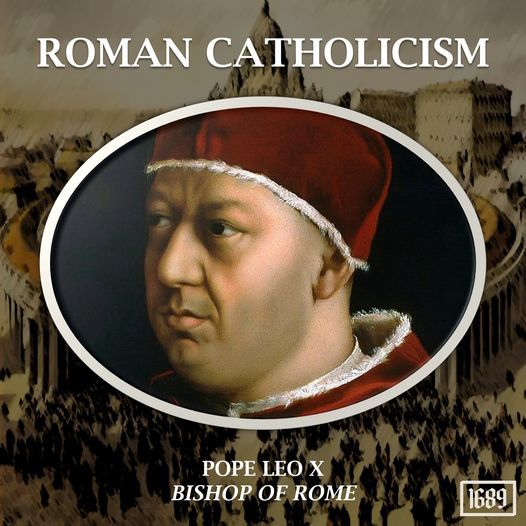
500 years ago, Roman Catholicism was the predominant religion practiced in the European world. Giovanni di Lorenzo de' Medici was elected to the office of Pope in March 1513, and was the last non-priest to be elected pope. Giovanni is most widely known by his official Papal name, Pope Leo X; and was the Pope during the beginnings of the Protestant Reformation. In 1521, Pope Leo excommunicated Martin Luther who nailed the 95 theses (due to unbiblical practices such as the exploitation of people, and the corruption of biblical principles via the practice of selling indulgences). Leo then unexpectedly died from pneumonia 10 months afterwards.
This is why we remember Church History, because we can see how the Lord continues to work to preserve the truth of His Word and His covenant people, and it can give us perspective on current issues facing the church today. Next week, join us in remembering the protestant reformers on Reformation Day!
Source:
1689 Reformed Baptist
7 notes
·
View notes
Text



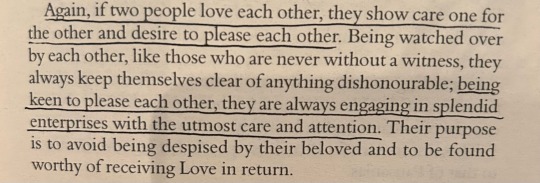
Some excerpts from the first speech Giovanni “gave” at a supper Bandini hosted in celebration of Plato’s death day where everyone read the Symposium then gave speeches on the nature of Love in response to each section of the Symposium.
Naturally, what the speeches actually were versus what Marsilio wrote down are likely vastly different. He very much was just using that gathering as a way to frame his commentary on Symposium in the classic Socratic style.
In any case, he gave Giovanni the most speeches (of course he did) with three of seven going to him. The others were given by Cristoforo Landino, Carlo Marsuppini, Tomasso Benci, Cristoforo Marsuppini.
Granted, technically all attendees were supposed to get one but a few people had to leave so the excess fell to Cavalcanti
Here’s Marsilio’s required plug about how hot his boyfriend is:

And a bit from the “official” preface and dedication (not the Secret/Personal one, as I call it, which was the true dedication to Giovanni):

The official dedication is to the citizens of Florence, Bernardo Del Nero, and Antonio di Tuccio Manetti and in this one he says Lorenzo de Medici inspired him to write the commentary on the Symposium. This is obviously just Ficino trying to please a patron because he says in many letters, and in the letter/secret preface of the first manuscript edition that it was Giovanni who persuaded him as a means to try and leverage him out of a deep depressive episode.
Anyway, your daily Ficino Blogging continues.
#marsilio ficino#Giovanni cavalcanti#Marsilio blogging#early modern history#early modern Italy#Renaissance Italy#Neoplatonism#de amore#on the nature of love
3 notes
·
View notes
Text
Ages of Medici Women at First Marriage
I have only included women whose birth dates and dates of marriage are known within at least 1-2 years, therefore, this is not a comprehensive list.
This list is composed of Medici women from 1386 to 1691 CE; 38 women in total.
Piccarda Bueria, wife of Giovanni di Bicci de’ Medici: age 18 when she married Giovanni in 1386 CE
Contessina de’ Bardi, wife of Cosimo de’ Medici: age 25 when she married Cosimo in 1415 CE
Lucrezia Tornabuoni, wife of Piero di Cosimo de’ Medici: age 17 when she married Piero in 1444 CE
Bianca de’ Medici, daughter of Piero di Cosimo de’ Medici: age 14 when she married Guglielmo de’ Pazzi in 1459 CE
Lucrezia de’ Medici, daughter of Piero di Cosimo de’ Medici: age 13 when she married Bernardo Rucellai in 1461 CE
Clarice Orsini, wife of Lorenzo de’ Medici: age 16 when she married Lorenzo in 1469 CE
Caterina Sforza, wife of Giovanni de' Medici il Popolano: age 10 when she married Girolamo Riario in 1473 CE
Semiramide Appiano, wife of Lorenzo di Pierfrancesco de' Medici: age 18 when she married Lorenzo in 1482 C
Lucrezia de’ Medici, daughter of Lorenzo de’ Medici: age 18 when she married Jacopo Salviati in 1488 CE
Alfonsina Orsini, wife of Piero di Lorenzo de’ Medici: age 16 when she married Piero in 1488 CE
Maddalena de’ Medici, daughter of Lorenzo de’ Medici: age 15 when she married Franceschetto Cybo in 1488 CE
Contessina de’ Medici, daughter of Lorenzo de’ Medici: age 16 when she married Piero Ridolfi in 1494 CE
Clarice de’ Medici, daughter of Piero di Lorenzo de’ Medici: age 19 when she married Filippo Strozzi the Younger in 1508 CE
Filberta of Savoy, wife of Giuliano de’ Medici: age 17 when she married Giuliano in 1515 CE
Madeleine de La Tour d’Auvergne, wife of Lorenzo II de’ Medici: age 20 when she married Lorenzo in 1518 CE
Catherine de’ Medici, daughter of Lorenzo II de’ Medici: age 14 when she married Henry II of France in 1533 CE
Margaret of Parma, wife of Alessandro de’ Medici: age 13 when she married Alessandro in 1536 CE
Eleanor of Toledo, wife of Cosimo I de’ Medici: age 17 when she married Cosimo in 1539 CE
Giulia de’ Medici, daughter of Alessandro de’ Medici: age 15 when she married Francesco Cantelmo in 1550 CE
Isabella de’ Medici, daughter of Cosimo I de’ Medici: age 16 when she married Paolo Giordano I Orsini in 1558 CE
Lucrezia de’ Medici, daughter of Cosimo I de’ Medici: age 13 when she married Alfonso II d’Este in 1558 CE
Bianca Cappello, wife of Francesco I de’ Medici: age 15 when she married Pietro Bonaventuri in 1563 CE
Joanna of Austria, wife of Francesco I de’ Medici: age 18 when she married Francesco in 1565 CE
Camilla Martelli, wife of Cosimo I de’ Medici: age 25 when she married Cosimo in 1570 CE
Eleanor de’ Medici, daughter of Francesco I de’ Medici: age 17 when she married Vincenzo I Gonzaga in 1584 CE
Virginia de’ Medici, daughter of Cosimo I de’ Medici: age 18 when she married Cesare d’Este in 1586 CE
Christina of Lorraine, wife of Ferdinando I de’ Medici: age 24 when she married Ferdinando in 1589 CE
Marie de’ Medici, daughter of Francesco I de’ Medici: age 25 when she married Henry IV of France in 1600 CE
Maria Maddalena of Austria, wife of Cosimo II de’ Medici: age 19 when she married Cosimo in 1608 CE
Caterina de’ Medici, daughter of Ferdinando I de’ Medici: age 24 when she married Ferdinando Gonzago in 1617 CE
Claudia de’ Medici, daughter of Ferdinando I de’ Medici: age 16 when she married Federico Ubaldo della Rovere in 1620 CE
Margherita de’ Medici, daughter of Cosimo II de’ Medici: age 16 when she married Odoardo Farnese in 1628 CE
Vittoria della Rovere, wife of Ferdinando II de’ Medici: age 12 when she married Ferdinando in 1634 CE
Anna de’ Medici, daughter of Cosimo II de’ Medici: age 30 when she married Ferdinand Charles of Austria in 1646 CE
Marguerite Louise d’Orleans, wife of Cosimo III de’ Medici: age 16 when she married Cosimo in 1661 CE
Violante Beatrice of Bavaria, wife of Ferdinando de’ Medici: age 16 when she married Ferdinando in 1689 CE
Anna Maria Franziska of Saxe-Lauenberg, wife of Gian Gastone de’ Medici: age 18 when she married Philipp Wilhelm of Neuberg in 1690 CE
Anna Maria Luisa de’ Medici, daughter of Cosimo III de’ Medici: age 24 when she married Johann Wilhelm, Elector Palatine in 1691 CE
The average age at first marriage among these women was 17 years old.
6 notes
·
View notes
Text
Medici, Masters of Florence

Los Medici, Señores de Florencia, (Medici: Masters of Florence) en su idioma original, es una serie que nos sitúa en la Europa del siglo XV, más específicamente en la región que conocemos hoy en día como la península italiana. Adentrándonos en el contexto del surgimiento de posiblemente una de las familias más influyentes y ricas de toda Europa, “los Medici”.

Todo comienza en Florencia en el año de 1429, donde el principal de la familia de los Medici, “Giovanni de Medici” logra establecerse como un solido eslabón de la sociedad Florentina, a pesar de las acciones en contra de diversas familias de nobles que quieren acabar su influencia, como los Albizzi entre otros. En la serie nos muestran una serie de acontecimientos que causan que la trama nos enfoque en el desarrollo de los dos hijos principales de la familia y herederos del banco, Cosimo y Lorenzo de Medici, los cuales asumen el mando después de la misteriosa muerte de su padre envenenado, por consiguiente, veremos como estos dos personajes intentan mantener el legado de la familia a flote y como logran afrontan una serie de eventos que azotan a la Florencia de la época.

A lo largo de las escenas, tanto el guion como el transcurso de los acontecimientos nos ponen al frente de escenarios históricos de la cultura Florentina y la Italiana en general, pero principalmente los que comprende a la región toscana, teniendo de principales protagonistas del entorno a Montepulciano, Pienza, San Quirico de Orcia y Bagno Vignoni, además de la propia Florencia que funciona como escenario principal y lugar donde residen la mayoría de los personajes principales residen y conviven.
Una de las cosas mas remarcables es como a través de la ambientación, el uso de la utilería y de disfraces, además de usar las mismas construcciones antiguas y algunos que otro efectos de cámara nos narran como era la arquitectura de la época, una arquitectura medieval que iba en transición entre el gótico y las nuevas corrientes que a lo largo de la serie veremos promulgadas por artistas y arquitectos como Filippo de Brunelleschi y Donato di Niccolò di Betto Bardi, comúnmente conocido “Donatello”, que van experimentando en esta nueva corrientes del renacimiento.
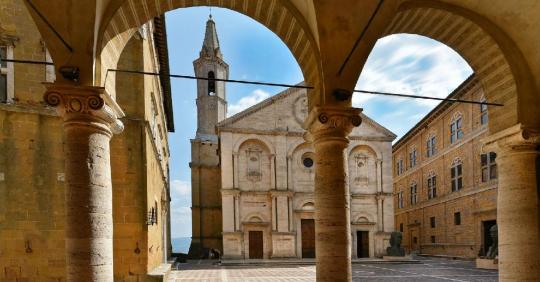
Sin ningún tipo de duda la variedad de escenarios y la riqueza cultural que en ellos nos muestran es una deleite total, tempranamente en la serie nos ponen en contexto del entorno con edificaciones como La catedral de Pienza o el palacio Piccolomini, que nos muestran un poco de esta nueva arquitectura que se iba desarrollando en la Italia de 1400´s, esa postura clásica de las edificaciones, en contraste de otras edificaciones que portan mayor antigüedad así como Palazzo Comunal De Montepulciano
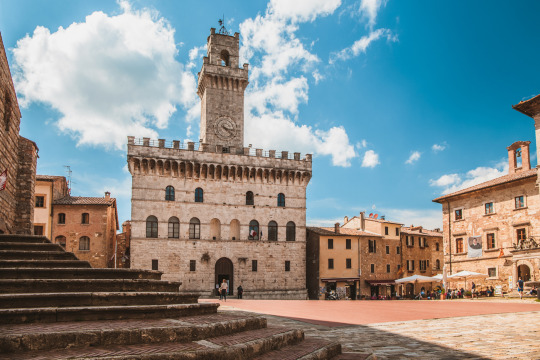
O por otro lado mostrando su lado mas bélico con estructuras de carácter militar como el Castillo de odescalchi bracciano
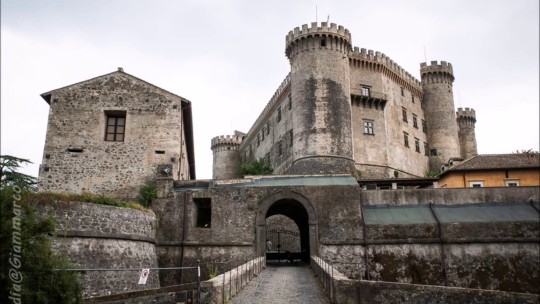
Que además de sus impresionantes tomas, poco a poco nos ponen en contexto de los hechos que van ocurriendo, entre intrigas y conspiraciones, enemistades políticas y conflictos abiertos, entre las familias, y abriéndonos a los sucesos mas globales, como la guerra entre Milano y Florencia por la ciudad de Luca, o la Aparición de la peste negra que azota inclemente a la ciudadanía Florentina y que tiene su desarrollo principal en torno a la Catedral de Santa María de las Flores y la construcción de su cúpula. Se percibe ampliamente la influencia de la religión en el día a día en la sociedad en general, y como los nobles y adinerados tratan de tomar ventaja sobre personajes de la Fe, ya sea con el uso de extorsión, soborno o incluso amenaza para así asegurarse favores dentro de la misma jerarquía religiosa, mostrando una vez más lo complejo de la situación y como los mismos protagonistas ni siquiera quieren formar parte de esto si no que se ven obligados a formar parte todo esto si es que quieren sobrevivir.
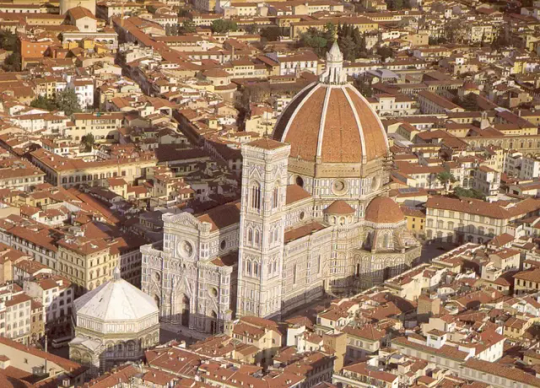
Sin lugar a dudas la serie logra su cometido de envolvernos en el punto de vista de la época, arrastrando al espectado al medievo y casi que dándole una alabarda y mandarlo a la ciudad más cercana para que o muera en alguna disputa entre familias, o le dé disentería antes de tan siquiera llegar, la forma de como abordar la vida de los personajes y sus objetivos, la decepción de algunos por no cumplirlos, o el odio de otros al verse impedidos en su cometido se siente y como la historia te narra dos realidades, la de antemano desde el punto de vista de Cosimo y los miembros de su familia, y por otro lado, la de la gente de las ciudades del comienzo del renacimiento.
3 notes
·
View notes
Text
Happy Three King Day!
Many Christmas carols make mention of the three kings, who follow a star and come to pay homage to the baby Jesus in Bethlehem. They are called “The Three Wise Men from the East.” At many courts in the east, including ancient Babylon and Persia, learned astrologers often served as priestly advisers and practised the art of magic.
In the centuries since the three magi have been interpreted as kings. Through the centuries, paintings have shown as many as eight kings. The Western tradition of three kings most likely arose from three gifts of gold, frankincense, and myrrh that they brought to the 'newborn King.'
Every year, on January 6th, a solemn procession inspired by Benozzo Gozzoli's celebrated fresco in the Chapel of the Magi in Palazzo Medici Riccardi winds its way through the ancient streets of the city centre to celebrate the feast which recalls the journey made by the Magi to pay homage to the Infant.

Procession of the Youngest King
or Corteo dei Magi, Benozzo Gozzoli, Palazzo Medici Riccardi, Cappella dei Magi, Corteo con Lorenzo, Piero e Giovanni de' Medici. Florence, Italy.

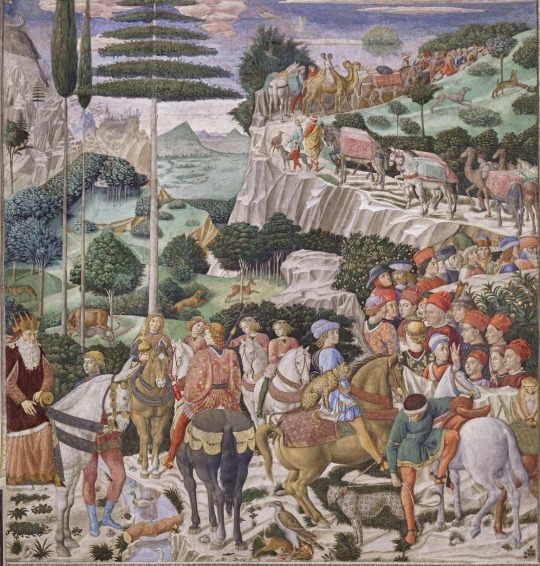
The Chapel of the Magi
The Chapel of the Magi (Cappella dei Magi) is a treasure chest located on the first floor, the heart of the palace. It was designed by Michelozzo and consists of a square-plan space with a recess slightly raised above the floor to accommodate the altar.
It could be accessed via two entrances: a private entrance for the family, and a public entrance for guests. The gilded wooden ceiling, finely carved by Pagno di Lapo, seems to reflect on the precious floor in polychrome marble.

The walls were frescoed by Benozzo Gozzoli from 1459 onwards: the images depict the journey of the Magi towards Christ Child, who is in the foreground of the altarpiece painted by artists belonging to Filippo Lippi’s workshop. Starting from the wall to the east, the parade is headed by Caspar (in a white tunic), the youngest Magus Caspar (possibly a idealised young Lorenzo il Magnifico) at East wall at the Magi followed by Balthazar (in a green tunic) on the south wall, and by Melchior (in a red tunic) on the wall to the west.
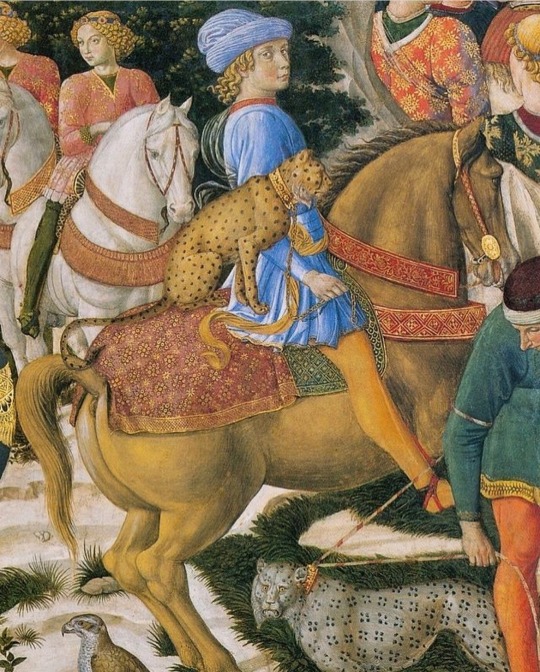
The astonishing richness of details and ornaments is complemented by an accurate depiction of the landscape and characters of the time who join the holy parade: You will notice Cosimo and Piero de Medici, the young Lorenzo and Giuliano, Gian Galeazzo Sforza, Sigismondo Pandolfo Malatesta, and Pope Pius II (born Enea Silvio Piccolomini).
The procession inspired by Benozzo Gozzoli is an event instituted to tie in with the celebrations for the seventh centenary of the laying of the cathedral's foundation stone and the foundation of the Opera itself, reviving an ancient and glorious Florentine tradition from the 15thcentury by staging a historical cavalcade under the auspices of the Archdiocese and Cathedral Chapter in conjunction with the city authorities and with the participation of towns and villages in the province of Florence.
#remagi #ThreeKingDay #benozzogozzolichapel #benozzogozzoli #palazzomediciriccardi #florence #Italy #palazzomediciriccardiflorence #epiphany #Medici #tuscany #renaissanceart
4 notes
·
View notes
Text
Clarice literally being in the Medici household for 5 minutes: This family is chaotic and I regret my decision...
#medici funny texts#clarice orsini#medici#medici funny#a medici and an orsini#rp#rp blog#humble and penitent be damned#mun thoughts#i medici#clarice and lorenzo#clarice de medici#giovanni di lorenzo de medici#piero di lorenzo de medici#clarice x lorenzo#lorenzo the magnificent
23 notes
·
View notes
Text



Da: LE STREGHE DI SHAKESPEARE - di Gianpiero Menniti
L'ISTANZA NARRATIVA
L’Io dell’autore è una rappresentazione del mondo, una rappresentazione fenomenica che si sostanzia in costruzione narrativa del senso, nella scia della necessità di costruzione delle rappresentazioni sociali.
Questa necessità del nostro sistema cognitivo ha un luogo che va oltre la mente e che è il logos, il discorso; la sua ricerca è volta verso l’interpretazione; il suo metodo è quello della descrizione. Dunque, narrare è costruire la realtà, una porzione di realtà, o una realtà altra consapevole della sua opposizione, del suo divenire “essere” per opposizione allo spazio occupato dalle altre essenze, cioè dalle altre interpretazioni di essenze.
Può un testo “essere”?
In senso materiale è facile rispondere di sì, ma sarebbe ben poca cosa se l’essere fosse esclusivamente il risultato della materialità degli eventi.
No, l’essere è l’identità comune tra i molteplici, è quanto si trova a essere partecipato dai molteplici.
Se l’essenza del pensiero umano è ciò che l’umano conosce, allora un testo, un testo narrativo, è parte di quest’essenza, un’essenza che non si origina nel nulla per ritornare nel nulla, ma che è sempre esistita e sempre sarà.
Non è generata poiché essa è nella molteplicità inespressa dell’umano, è nei suoi saperi, è essenza dell’umano poiché conoscenza fenomenica del mondo e rappresentazione collettiva, comune, interrelata.
- Benozzo Gozzoli (1420 - 1497): "Corteo con Lorenzo, Piero e Giovanni de' Medici", 1459 - parete est, ciclo di affreschi della Cappella dei Magi, palazzo Medici Riccardi, Firenze
- In copertina: Maria Casalanguida, Interpretazione de ‘Il bagno turco di Ingres’, 1976, collezione privata
2 notes
·
View notes
Text

"Lucrezia Tornabuoni's cultural patronage was not restricted to the visual arts. She indicated her interest in music and Italian poetry from the early days of her marriage. In March 1445, Rosello Roselli sent Giovanni di Cosimo de' Medici some music for a ballad and he also sent a copy to a musician named Ser Francesco, so that he could teach Lucrezia to sing it.
Michele di Giogante, an accountant and compiler of popular rhyme, dedicated two sonnets to Lucrezia during the early years of her married life. In the first, he began by describing her as:
'Magnanimous, noble, modest and pleasant,/charming, kind, wise, honourable and gay/' and ended the poem with reference to Lucrezia being 'Well-born to a deserving line'.
n the second poem, Giogante spoke of wanting '...to return to those who value you:/to the cage, or the lap of your Lucrezia'.
This was not only high praise, it was also indicative of his view of her as a valued patron who, like the Virgin Mary, was highly virtuous and a source of refuge and comfort.
Lucrezia was interested in supporting vernacular poets both secular and sacred and was friendly with many literary figures of Lorenzo's circle. She was a patron of Feo Belcari, Luigi Pulci, and Bernardo Bellincioni all of whom wrote vernacular poetry, as well as a friend of Angelo Poliziano, a humanist poet of renown. Lucrezia's literary patronage and her interest in Italian poetry rather than the Latin humanist tradition of Marsilio Ficino, reflected her personal literary preferences as well as her vernacular education. In contrast to Lorenzo, who received an education in both Latin and the vernacular, it would have been difficult for Lucrezia to take an active interest in Neoplatonism and other forms of humanist thought in Florence, because humanism was linked so strongly to the public realm of government."
Source: The Medici Women Gender and Power in Renaissance Florence, Natalie R. Tomas, Routledge, Monash University, Australia
#perioddramaedit#history#history edit#lucrezia tornabuoni#mediciedit#i medici#imediciedit#natalie dormer#donne della storia#donne nella storia#donne italiane#donneitaliane#women of renaissance#renaissance italy#renaissance women#renaissance#italian renaissance#italiansedit#historyedit#rinascimento#poliziano#lorenzo il magnifico#lorenzo the magnificent#lorenzo de medici#piero de' medici#medici masters of florence#medici: the magnificent#aesthetic#women in history#women of history
37 notes
·
View notes
Photo

And yet Heaven’s providential intervention stepped in; since the still free mind of Prince Don Cesare couldn’t grasp a greater gift was yet to come. And this bird-catcher fooled by hope, instead of an escaped dove, managed to catch a Phoenyx. This was indeed Donna Luisa di Luna e Vega, daughter of Pietro Duke of Bivona, who by marrying Don Cesare, not only brought to her husband’s House her father’s Duchy, and the lands of the House of Peralta, already englobed by those of de Luna’s, but then with the marriages of her son and grandson, poured in the Moncada’s possessions, the titles and riches of two other illustrious lineages, that of Aragona and Cardona, with the Duchy of Montalto and the County of Collesano.
Hence, like that Arabian bird, which it is obsequiously followed by other birds wherever it flies, likewise she brought with her a magnificent procession of many estates in the House where she nested.
Giovanni Agostino della Lengueglia, Ritratti della prosapia et heroi Moncadi nella Sicilia: opera historica-encomiastica, p.559-560 [my translation]
Aloisia (or Luisa) was born in Bivona (nearby Agrigento) around 1553. She was the firstborn of Pietro Giulio de Luna Salviati, Duke of Bivona, Earl of Caltabellotta and of Sclafani, and his first wife, the Spanish Doña Isabel de Vega y Osório. The baby girl was named after her paternal grandmother, Luisa Salviati de' Medici. In fact, through her father, Aloisia descended from Lorenzo il Magnifico de' Medici, who was her great-great-grandfather. On her mother’s side, on the other hand, she was the granddaughter of Juan de Vega y Enriquez, who had been Viceroy of Navarre and later of Sicily (also the one who brought Jesuits in Sicily). Aloisia had two younger sisters, Bianca and Eleonora, and a half-brother, Giovanni, born in 1563, out of Pietro's second marriage to Ángela de la Cerda y Manuel, daughter of Juan de la Cerda, IV Duke of Medinaceli and Viceroy of Sicily from 1557 to 1564.
In 1568, Aloisia married Cesare Moncada Pignatelli, Prince of Paternò, Earl of Adernò and of Caltanissetta, a decade older than her, in Caltabellotta. The union between the two had been planned by Juan de la Cerda, the bride's step-grandfather. Cesare was indeed supposed to marry his cousin, Giovanna de Marinis (daughter of his aunt Stefania), but marriages between noble families were delicate matters and needed the Viceroy's approval as well as (sometimes) the Papal dispensation in case of seventh grade parentage. The Moncadas were an incredibly wealthy and noble family. They owed their fortune mainly to Guglielmo Raimondo Moncada Earl of Agosta who, in 1379, had kidnapped Queen Maria I of Sicily and brought her to Spain where she married her cousin Martino. To thank him for his support, King Pedro IV of Aragon (the Queen’s maternal grandfather) had named Guglielmo Raimondo Royal Counselor and Justiciar of the Kingdom of Sicily. From 1565, the Moncadas were able to add to their titles that of Princes of Paternò, plus managed to exchange Augusta for Caltanissetta, thus saving tons of money since Augusta, differently from Caltanissetta, was a maritime city, which was often the victim of pirates’ raidings and needed to be constantly defenced (which entailed great expenses). De la Cerda used his influence to mess up the Moncadas’ original wedding plans (angering thus the groom’s family) and proposed the union with the de Luna, with whom the Moncadas were distantly related and therefore had needed the Pope’s blessing.
Aloisia would give birth to two children: Isabella (who would die an infant) and Francesco (ca. 1569-1592). Her marital life would be cut short as Cesare would suddenly die in Paternò on July 30th 1571, after only three years of marriage.
Little Francesco, now Francesco II, would be officially appointed of his late father’s titles the following year and placed under the guardianship of his maternal grandfather, Pietro de Luna, and his paternal uncle, Fabrizio Moncada (first husband of famous portrait painter Sofonisba Anguissola). Seven years later, Fabrizio would die in a pirate attack off the coast near Capri and some would talk about it not being an accident and about rumours of Fabrizio being headed to Spain to denounce his sister-in-law’s meddlings in the management of the Moncada’s patrimony.
Gossipers aside, it’s documented Aloisia took personal care in the education of her son and short-lived daughter. She began Francesco to study law, philosophy, literature and maths, as well as more artistic subjects like painting and sculpting.
Aloisia was the one who actively ruled over her son’s lands, showing a great deal of resourcefulness and managerial skills. Holding steady in her mind the idea of strengthening her (and by result her son’s) position, on September 17th, 1577, in Monreale, she married Antonio d’Aragona Cardona, Duke of Montalto and himself a widower. By concession of the Viceroy Marcantonio II Colonna, Aloisia obtained to keep acting as her son’s guardian without having to cede the role to her new husband or someone else.
Antonio d’Aragona too belonged to a prominent family, being a grandson of Ferrante d’Aragona Guardato, founder of the Line of the Dukes of Montalto and illegitimate child of Ferdinando I of Naples. Antonio’s first wife had been María de la Cerda y Manuel de Portugal, daughter of Juan de la Cerda y Silva, 4th Duke of Medinaceli as well as a Grandee of Spain, Viceroy of Sicily and Viceroy of Navarre during his long political career. From his first marriage, only his daughter Maria had reached adulthood as little Ferdinando died as an infant.
Aloisia bore Antonio a daughter, Bianca Antonia, who would later marry Giuseppe Ventimiglia Ventimiglia, II Prince of Castelbuono and IX Marquis of Geraci, and be the mother of Francesco III Ventimiglia d’Aragona, who would be offered (but not accept) the Crown of the Kingdom of Sicily during the anti-Spanish revolt of 1647.
The Duke of Montalto died in Naples on February 8th, 1584, on the route to quell a riot in the Flanders (the so called Dutch War of Independence) by virtue of his role of Captain General of the Spanish Cavalry in the Flanders. Leaving no male heir, all his titles and possessions passed to his eldest daughter, Maria.
Aloisia didn’t lose time to grieve for her husband as she swiftly arranged the marriage between her son Francesco and her step-daughter, the new Duchess of Montalto. The wedding took place on March 12th 1585 and the following year Francesco received maritali nomine the endowment of the Duchy of Montalto the Earldom of Collesano and all the lands owned by his wife’s family, bringing the total to thirteen of the fiefs owned by the Moncada.
On August 1592, Aloisia’s half-brother, Giovanni died childless, so as his eldest sister and heir, on September 30th she was endowed of the baronies of Scillato and Regaleali. She also inherited many fiefs in the area of Caltavuturo and Sclafani. From her court in Caltanissetta, she kept cleverly administering her possessions as well as the lands acquired through both of her late husbands (she generally rented her lands to foreigners, mostly Genoese and Pisans). She invited the Jesuits in Caltanissetta, had many churches and religious centre of the area built, she restored the city’s Cathedral. Aloisia took particular interest in having the Moncada’s libri di famiglia (books used to register one family’s commercial activity as well as key events in the lives of its family members, particularly common from XIII to XVI century) perfectly catalogued and maintained. She introduced and commissioned many artists and was perhaps the one who called back her sister-in-law Sofonisba Anguissola who, at that time, lived in Genova with her second husband, and who starting 1615 returned in Sicily where she would die.
Those who visited her, were rendered almost speechless about the magnificence of her court. During a visit in 1598 of the Viceroy and Vicereine, Bernardino de Cárdenas y Portugal and his wife Luisa Manrique de Lara, the Duchess had, in that occasion, surpassed herself. Aloisia had, in fact, arranged the area where she would receive her guests (at her own expenses), the forest of Mimiani, so perfectly and with so many tents, one would have thought you were in an actual city. Her guests were so pleased, the Vicereine gifted her of a splint of the Holy Cross kept in a display case ornated by precious stones.
Aloisia was also particularly generous. She did a lot of charity (and passed on the same generous disposition to her son and grandson), but made it through the nuns, ordering them to keep quiet about her being the one who sent the money, so that people would rather thank the Heaven for the celestial gift. She must have thought that public displays of charity didn’t have as an aim to help people, but rather that some benefactors did it for themselves since they took pleasure to hear their names be acclaimed for their generosity. During a terrible famine, when poor people were so hungry they ate grass and pasture, she used her personal income to provide for her people, so that at that time in her lands mortality rate was very low. She was also particularly mindful to guarantee that poor girls wouldn’t find themselves forced by misery to undertake a dishonourable life, granting them means to do honourable marriages. On the other hand, the Duchess didn’t skirt from regularly sending generous gifts to ministers and potentates, so that when at the right time, she could count on their support.
On May 23rd, 1592, a 23 year-old Francesco II Moncada died of malaria in Adernò (nearby Catania). Although it must have been extremely heartbreaking to lose her beloved son, Aloisia braced herself and took on the task of properly raising, together with her daughter-in-law, her 4 years-old grandson, Antonio. Since the child was also Donna Maria’s heir, in accordance with his parents’ marriage settlements, it had been stipulated he would take as first his mother’s surname and be styled as Antonio II d’Aragona Moncada de Luna.
The little Prince grew up together with his younger brother Cesare (the other brother, Giovanni, had died a child) in his family’s palace in Caltanissetta, closely watched over by their grandmother and mother (although, at ten, he seriously risked drowning in a cistern, while playing with his brother, and was saved thanks to Cesare’s cries for help which alerted Aloisia and Maria). From a young age, Antonio had been betrothed to Juana de la Cerda y de la Cueva, daughter of Juan de la Cerda, VI Duke of Medinaceli and his first wife Ana de la Cueva and at that time her father’s only heir.
The Duke of Medinaceli was in particular eager to have this marriage celebrated and already thought of Antonio as a son of his own. Since the young Moncada kept delaying his journey to Spain in order to marry, the Duke of Medinaceli somewhat grew tired and got married a second time (although he hadn’t thought of remarrying previously). Unfortunately for Juana, her step-mother, Antonia de Toledo Dávila y Colonna, would in 1607 give birth to a son, Antonio Juan Luis, who would surpass his sister and would one day inherit their father’s titles and possessions.
Although, understandably, organising a quasi-royal marriage all the way to Spain, complete with a long voyage to reach it, was indeed a big and long deal, that missed chance was perhaps Aloisia’s only mistake. If only they had moved faster, and Juana had succeeded her father, Moncada’s riches might have reached legendary status.
The delay was due to the fact that the old Duchess had also insisted to travel to Spain, accompanied by her daughter-in-law, Maria, and her two young granddaughters, Isabella and Luisa, with the hope of finding suitable matches for the girls among the Spanish aristocracy, and for that every aspect of the journey had to be perfect (Isabella would die young, while Louisa would marry in 1612 Eugenio de Padilla Manrique, III Count of Gadea). The Moncadas had to arrive in Spain with the pomp and grandeur (Aloisia must have thought) they deserved. Worryngly, as they reached Naples and stopped for a break, the groom grew sick and had to be treated by the best doctors before he could resume the voyage.
The marriage between Antonio Moncada and Juana de la Cerda took place in 1607 and it seems like it was a successful union, with the couple living harmoniously together in Spain for the first years, then settling in Collesano, near Palermo and part of Antonio’s possessions. While in Spain, the new Duchess gave birth to a son, Francesco, in 1613, who would be followed by Sicilian born Luigi Guglielmo (1614), Marianna (1616), and Ignazio (1619).
In 1610, Maria d’Aragona de la Cerda, Dowager Princess of Paternò died, leaving her mother-in-law Aloisia as the sole matriarch of the family.
In 1626, the young Francesco, Antonio II’s heir, would feel ill and die (and his siblings almost followed him) while both of his parents were in Spain to attend their courtly duties. Full of pain and regrets, Antonio and Juana would obtain the dissolution of their marriage and they both would take the cloth, becoming one a Jesuit and the other an Augustinian nun. Following his father’s resignation, 13 years-old Luigi Guglielmo became the new Prince and head of the Moncada family.
But Donna Aloisia would be spared of these sorrows as she died in Palermo in 1620, at 67. She would be buried in her Caltanissetta, in the Church of Santa Maria Assunta, which would be turned into a hospital in the XIX century, and which already housed the grave of her son Francesco II.
Sources
Antognelli Enrica, LUISA MONCADA Una Grande Donna del Rinascimento Siciliano
De la Cerda. Duques de Medinaceli
della Lengueglia Giovanni Agostino, Ritratti della prosapia et heroi Moncadi nella Sicilia: opera historica-encomiastica, p.557- 672
Le foto che raccontano il passato di Bivona
Palumbo Valeria, La Sicilia celebra la potentissima Aloisia de Luna Vega
Silva Alfonso Franco, EL DUCADO DE MONTALTO - NOTAS SOBRE LOS SEÑORIOS ITALIANOS DE MEDINA SIDONIA
Storia e Arte
#women#history#historicwomendaily#historical women#women in history#aloisia de luna vega#House of Moncada#House De Luna#caltanissetta#province of caltanissetta#aragonese-spanish sicily#people of sicily#women of sicily#myedit#historyedit#Francesco II Moncada de Luna#Antonio II d'Aragona Moncada
21 notes
·
View notes
Text
NOOOO WHAT!!!!!!! how is she (caterina sforza. wife of a head conspirator in the pazzi conspiracy, which took place in 1478) then married to Giovanni di Pierfrancesco de' Medici (born in 1467) (second cousin to lorenzo de medici, the guy who the pazzi conspiracy was meant to kill) aka the brother of the guy (Lorenzo di Pierfrancesco de' Medici) who was the grandfather of Lorenzino de' Medici who killed his cousin Alessandro de' Medici, Duke of Florence……….
4 notes
·
View notes